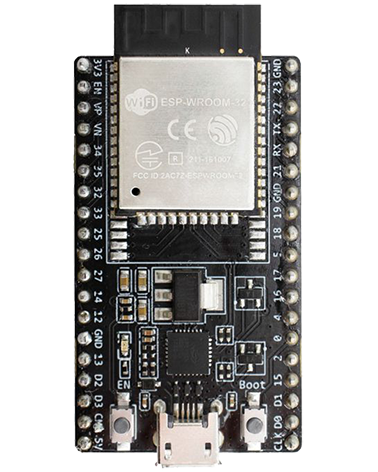Resources
https://github.com/espressif/vscode-esp-idf-extension/blob/master/docs/tutorial/basic_use.md
NOTE: The esp-idf build system does not support spaces in paths to projects
Create an example project in Visual Studio Code
Menu > View > Command Palette (CTRL+SHIFT+P) > Type: ESP-IDF: Show Examples Projects
(If it doesn’t come up, make sure VS Code isn’t in restricted safe mode)
Choose “Use current ESP-IDF (\path\to\esp-idf)”.
All of the example projects will be shown. Select the project you want and press the “Create project using example” button.
In the Select Folder ensure your path for the project DOES NOT HAVE SPACES in it.
If you don’t want an example project
Its still a good idea to start with a sample such as “blink” as above, so ESP-IDF sets it up with all the latest standard setup. Once created you can do the following:
Close VS Code
Rename the folder to the name you want to use for your project
Delete these unnecessary files:
\####.py
\README.md
Delete these files that you will replace with your own code files:
\main\###_example_main.c
\main\CMakeLists.txt
Copy in all your project source code and make files.
If you have your own standard VS Code config files for a project then replace these files with them:
\.vscode\launch.json
Update project() with a new project name in \CMakeLists.txt (in projects root folder)
Setup the project
Select a target device
Menu > View > Command Palette (CTRL+SHIFT+P > Type: ESP-IDF: Set Espressif device target
Once prompted, select the device
Once prompted, select the board
Configure the project
Menu > View > Command Palette > Type: ESP-IDF: SDK Configuration editor
Wait for it to load
Modify the ESP-IDF project settings as requried. After all changes are made, click save then close the window.
Configure the ESP32
See the Project & ESP32 settings page here
Setup c_cpp_properties.json
Configure the .vscode/c_cpp_properties.json as explained here: https://github.com/espressif/vscode-esp-idf-extension/blob/master/docs/C_CPP_CONFIGURATION.md
If your project doesn’t have a “.vscode” folder, add it using:
Menu > View > Command Palette > Type: ESP-IDF: Add vscode configuration folder
Open “c_cpp_properties.json”
Use the default configuration from the link above (or your own)
Building the project
Build
Press CTRL+E then B (or enter command “ESP-IDF: Build your project”)
Check the “TERMINAL” window for any issues
Viewing project memory sizes etc
Menu > View > Command Palette > Type: ESP-IDF: Size analysis of the binaries
Programming the device
Menu > View > Command Palette > Type: ESP-IDF: Select port to use
Select the UART or JTAG port you want to use to program the device
Menu > View > Command Palette > Type (or press F1): ESP-IDF: Flash your project
Also available:
ESP-IDF: Flash (UART) your project
ESP-IDF: Flash (with JTag)
ESP-IDF: Select Flash Method and Flash
Debugging
https://github.com/espressif/vscode-esp-idf-extension/blob/master/docs/tutorial/debugging.md
Set your device
Menu > View > Command Palette > Type (or press F1): ESP-IDF: Set Espressif device target
Menu > View > Command Palette > Type (or press F1): ESP-IDF: Select OpenOCD Board Configuration
or
Menu > View > Command Palette > Type (or press F1): ESP-IDF: Device configuration
Debug
Build the project
Press ‘F5’ to start OpenOCD. You’ll see its status appear in the “OUTPUT” window.

